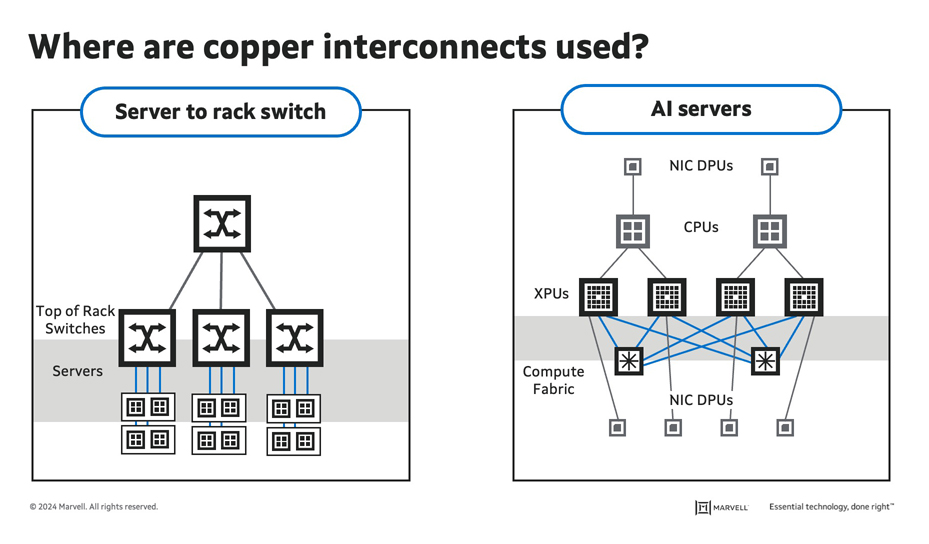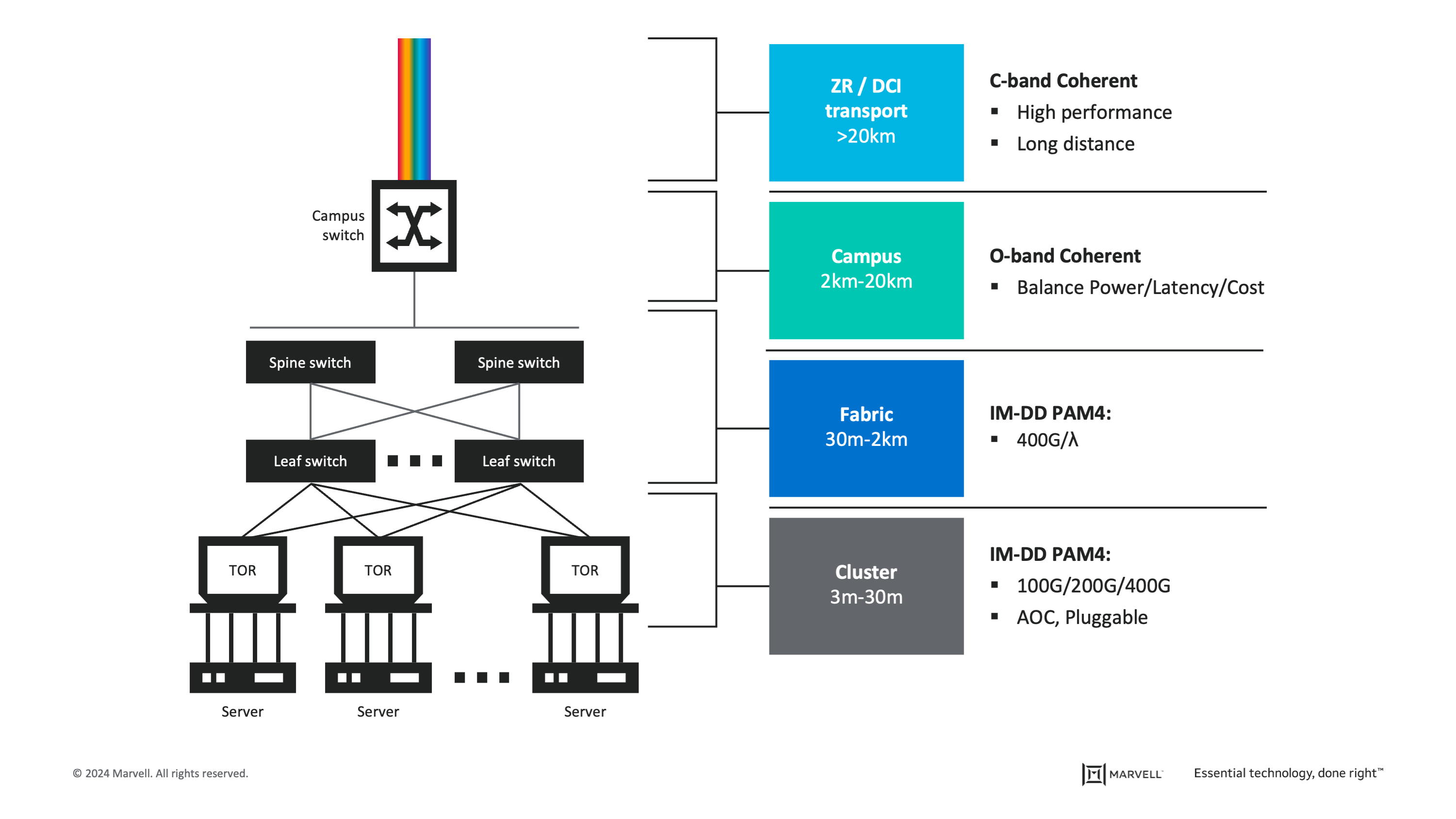

By Vienna Alexander, Marketing Content Professional, Marvell

Marvell is the Leading EDGE 2025 winner for its Ara product, a 3nm 1.6 Tbps PAM4 optical DSP platform, which enables the industry’s lowest power 1.6T optical modules. The engineering community voted to recognize the product as a leader in design innovation this year.
The EDGE awards celebrate outstanding innovations in product design for the engineering industry that have contributed to the advancement of technology. This award is presented by the Engineering Design & Automation Group, a subset of brands at Endeavor Business Media.
Ara is the industry’s first 3nm 1.6T PAM4 optical DSP platform. Marvell introduced it to meet growing interconnect bandwidth demands for AI and next-gen cloud data center scale-out networks.
By Michael Kanellos, Head of Influencer Relations, Marvell and Vienna Alexander, Marketing Content Intern, Marvell
Is copper dead?
Not by a long shot. Copper technology, however, will undergo a dramatic transformation over the next several years. Here’s a guide.
1. Copper is the Goldilocks Metal
Copper has been a staple ingredient for interconnects since the days of Colossus and ENIAC. It is a superior conductor, costs far less than gold or silver and offers relatively low resistance. Copper also replaced aluminum for connecting transistors inside of chips in the late 90s because its 40% lower resistance improved performance by 15%1.
Copper is also simple, reliable and hearty. Interconnects are essentially wires. By contrast, optical interconnects require a host of components such as optical DSPs, transimpedance amplifiers and lasers.
“The first rule in optical technology is ‘Whatever you can do in copper, do in copper,’” says Dr. Loi Nguyen, EVP of optical technology at Marvell.
2. But It’s Still a Metal
Nonetheless, electrical resistance exists. As bandwidth and network speeds increase, so do heat and power consumption. Additionally, increasing bandwidth reduces the reach, so doubling the data rate reduces distance by roughly 30–50% (see below).
As a result, optical technologies have replaced copper in interconnects five meters or longer in data centers and telecommunication networks.

Source: Marvell
By Xi Wang, VP of Product Marketing of Optical Connectivity, Marvell
Over the last 20 years, data rates for optical technology have climbed 1000x while power per bit has declined by 100x, a stunning trajectory that in many ways paved the way for the cloud, mobile Internet and streaming media.
AI represents the next inflection point in bandwidth demand. Servers powered by AI accelerators and GPUs have far greater bandwidth needs than typical cloud servers: seven high-end GPUs alone can max out a switch that ordinarily can handle 500 cloud two-processor servers. Just as important, demand for AI services, and higher-value AI services such as medical imaging or predictive maintenance, will further drive the need for more bandwidth. The AI market alone is expected to reach $407 billion by 2027.
O-band coherent or coherent lite—a technology that has been discussed for years at conferences but has yet to be deployed commercially in a meaningful way--will likely begin to percolate into the market over the next few years to help cloud service providers accommodate some of these challenges.

By Radha Nagarajan, SVP and CTO of Optical Platforms, Marvell
This article was first published by Photonics Spectra
The cloud. It evokes an ethereal, weightless environment where problems get whisked away by a breeze.
In reality, the cloud consists of massive industrial buildings containing millions of dollars’ worth of equipment spread over thousands, and increasingly millions, of square feet. In Arizona, some communities are complaining that cloud data centers are draining their aquifers and consuming far more water than expected1 while in the UK and Ireland the power requirements of data centers are crimping needed housing development. Even in regions like Northern Virginia where the local economies are tightly bound to data centers, conflicts between residents and the cloud are emerging.
With the rise of AI, these conflicts will escalate. AI models and data sets are growing exponentially in size2 and developers are contemplating clusters with 32,000 GPUs, 2,000 switches, 4,000 servers and 74,000 optical modules3. Such a system might require 45MW of power capacity, or nearly 5x the peak load of the Empire State Building. This resource-intensiveness also shows how AI services could become an economic high wire act for many.

Performance up, Power Down: Over 20 years, the data rate of optical modules has increased by 1000x while power per bit has decreased by 100x.
By Kristin Hehir, Senior Manager, PR and Marketing, Marvell

Marvell is excited to announce that three of its high-speed optical connectivity solutions have been distinguished among the best in the industry by the 2024 Lightwave Innovation Reviews. The three awards validate Marvell leadership in PAM4 DSP, coherent DSP and data center interconnect (DCI) modules for accelerated infrastructure.
A panel of judges, comprised of experts from the optical communications community, awarded Marvell with the highest score possible of 5.0 for both its Nova 1.6 Tbps PAM4 electro-optics platform and COLORZ® 800 ZR/ZR+ pluggable module, and an outstanding 4.5 honoree status for its Orion 800 Gbps coherent DSP. The honors reflect the industry’s recognition of Marvell leading-edge technologies to address the growing bandwidth and connectivity needs of artificial intelligence (AI), cloud data center and carrier networks.
Lightwave Editor In Chief Sean Buckley expressed his congratulations, stating, “On behalf of the Lightwave Innovation Reviews, I would like to congratulate Marvell on achieving a well-deserved level honoree status. This competitive program enables Lightwave to showcase and applaud the most innovative products, projects, technologies, and programs that significantly impact the industry.”
Copyright © 2026 Marvell, All rights reserved.